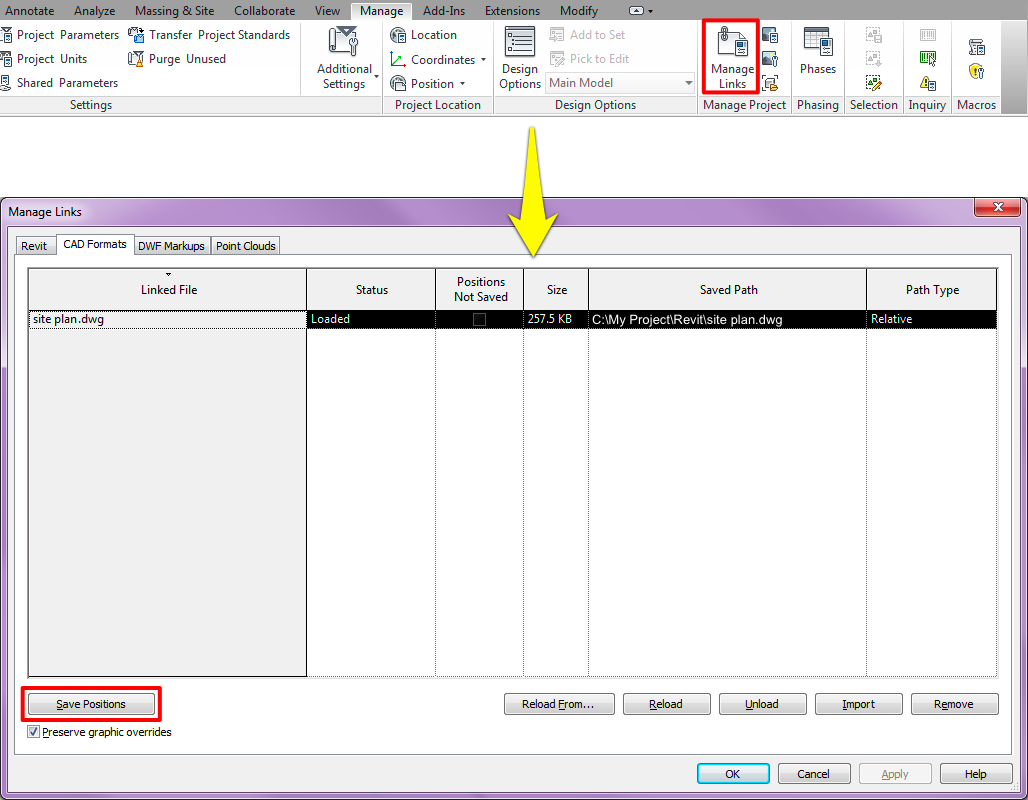Once Revit has acquired coordinates from the AutoCAD file, any time you move the CAD Site Plan in your Revit model, Revit prompts you to Save Positions (image below). It means Revit will write the new position into the CAD file. (No one should have the CAD file open when you Save Position). There is NO going back once Revit write the new position to the CAD file.
When the Save Position dialog box appears, you are given three options:
- Save Now – Report (save) the position of the relocated Site Plan to the CAD file.
- OK – Keep the relocated Site Plan location but don’t save it now. You have the option to save it later.
- Cancel – Undo Site Plan relocation.
If you selected “OK” earlier and decided the relocated Site Plan is at the correct location, click Manage tab > Manage Links (under Manage Project panel) > CAD Formats tab > Save Positions, to save the new location to the CAD file.
Why overwriting the CAD file?
You will probably question why Revit needs to overwrite the CAD file if the CAD file was originally used to define the Shared Coordinates. From what I understand, in AutoCAD, the coordinate system is fixed but the model is movable. In Revit, the model is fixed but the coordinate system is movable. An analogy is the CAD Site Plan is a table cloth. Since Revit already defined the Shared Coordinates, the coordinates are fixed (Basically, Revit won’t allow you to change it once it is defined). With a fixed model and fixed shared coordinates, moving the Site Plan = moving the table cloth. Revit has to report back to the CAD file how far the Site Plan has been moved relative to the “fixed pin point” – Shared Coordinates.
Related post to this topic
Setting up True North for a Project
Setting up True North for a Project – Best Practice


The tips given in this blog are quite interesting and informative. Thanks for sharing this article. I hope you will come up with more informative articles.